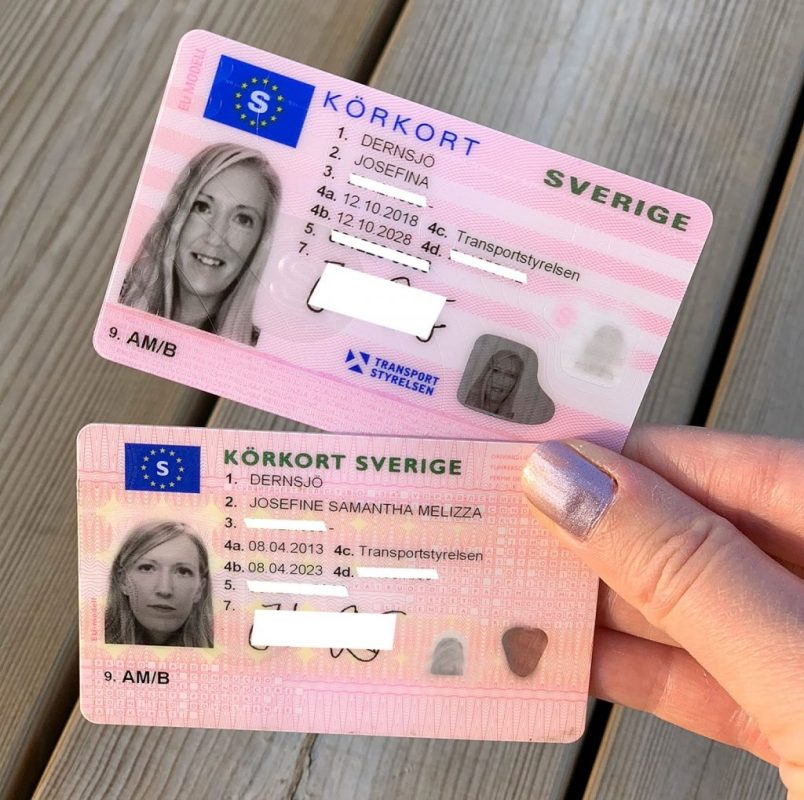12 Facts About Driving License Id-Handling 2025 To Make You Think About The Other People
The Future of Driving Licenses: ID Handling in 2025
As innovation continues to progress at an unmatched rate, numerous sectors are accepting innovations to improve user experience and efficiency. One of the locations experiencing considerable improvement is identity management, especially concerning driving licenses. With the intro of digital licenses and advanced recognition methods, the landscape of driving license ID handling is anticipated to go through substantial modifications by 2025. This short article checks out the awaited developments in driving license ID handling, the ramifications for users, and responses frequently asked questions about the future of driving licenses.
The Evolution of Driving Licenses
Driving licenses have actually generally worked as a way of determining an individual's authority to operate an automobile. They likewise serve numerous secondary functions, consisting of age confirmation and identity verification for banking and travel. Nevertheless, the physical card system has constraints, including dangers of counterfeiting, loss, and out-of-date information. As society seriously depends on effective and secure identification systems, the transition towards digital licenses is ending up being significantly popular.
Present Trends in Driving License ID Handling
Digital Licenses: Many states are piloting digital driving licenses that permit users to keep their credentials on their mobile phones. These digital licenses are developed with advanced security features, including biometric information, and can be scanned or shared securely.
Blockchain Technology: Some jurisdictions are exploring blockchain to boost the security and authenticity of driving licenses. This technology guarantees that information can not be tampered with and that the data is easily verifiable.
Facial Recognition: Increasingly utilized in recognition practices, facial acknowledgment technology can speed up the process of validating an individual's identity versus their driving license. This technology likewise helps lower scams and preserve the stability of the licensing systems.
Multi-Functional Licenses: Future driving licenses might integrate extra functions such as health records, travel documents, and even payment systems, supplying a thorough identity option.
The Benefits of Digital Driving Licenses by 2025
The shift toward digital driving licenses presents several benefits, including:
Convenience: Users can access their licenses anytime, which removes the requirement for physical cards. This is especially useful when individuals forget their license, as digital copies can be recovered rapidly.
Security: Advanced security measures can reduce the threat of identity theft, fraud, and unauthorized duplication. Digital licenses frequently consist of file encryption and biometric confirmation.
Performance: Reduced wait times at federal government offices and throughout traffic stops, as police can verify digital licenses quickly.
Implications for Users
While the improvements in driving license ID handling present numerous advantages, they also include challenges. Users require to adjust to brand-new technology and ensure they comprehend the modifications and their implications. Here are some factors to consider:
Privacy Concerns: With increased digital footprints, there will be heightened concerns over data personal privacy and how biometric data is stored and used.
Availability Issues: Individuals without access to smart devices or digital innovations may face barriers to obtaining and utilizing digital licenses.
Regulatory Compliance: With various jurisdictions embracing different systems and procedures, users need to understand their local laws relating to digital licenses and identification.
Prepared For Changes in Driving License ID Handling by 2025
Element
Current Status
Expected Change by 2025
License Format
Physical cards
Mainly digital licenses
Verification Process
Manual checks
Automated biometric verification
Security Measures
Fundamental holograms and functions
Advanced encryption and blockchain
Jurisdictional Differences
Fragmented processes across states
More standardized nationwide systems
User Interaction
In-person renewals and checks
Mobile applications for management
Frequently asked questions
1. What is a digital driving license?A digital driving license is an electronic variation of a conventional driving license that is stored on a mobile phone. It can be utilized for recognition and verification in numerous scenarios, with improved security functions to avoid scams.
2. How will digital licenses boost security?Digital licenses use file encryption and biometric information, making them harder to create or misuse compared to traditional cards. Additionally, blockchain technology can ensure data credibility and stability.
3. Will everyone be needed to change to a digital license?While lots of jurisdictions are approaching digital licenses, policies may vary. Users are motivated to consult their local licensing authorities for particular guidelines.
4. What are the potential disadvantages of digital licenses?Some prospective disadvantages include personal privacy issues relating to information storage, availability problems for individuals without mobile phones or digital literacy, and the need for a robust regulatory framework to handle security and user rights.
5. How can Köp B1 Körkort Online Utan Examen prepare for the shift to digital licenses?Stay notified about local initiatives relating to digital licenses, explore available mobile applications for handling recognition, and cultivate digital literacy to browse brand-new technologies with confidence.
The future of driving licenses and ID handling is poised for significant evolution by 2025. As digital licenses become more prevalent, users will experience boosted security, benefit, and effectiveness. Nevertheless, alongside the advantages come challenges that will require public awareness and adaptation. Stakeholders must prioritize education, guideline, and accessibility to guarantee a smooth shift that empowers individuals with the identification tools of the future. As technology advances, so too will the techniques through which society handles identity, especially vital in procedures as basic as operating an automobile.
